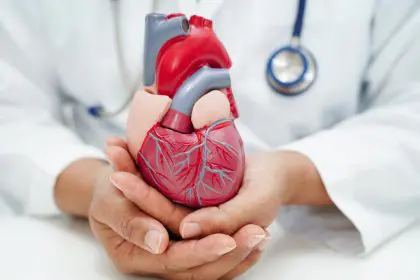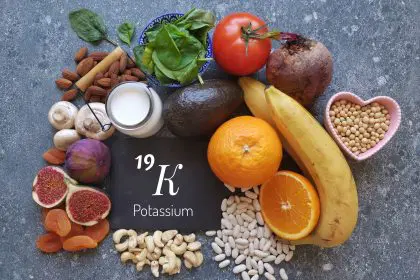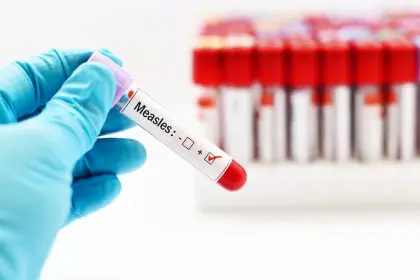Over 100 million Americans currently live with high blood pressure, yet many remain unaware of its profound connection to kidney health. This relationship represents one of medicine’s most critical yet underappreciated health dynamics—one that affects everything from heart function to cognitive health.
Recent research reveals that this connection works bidirectionally: kidneys help regulate blood pressure, while blood pressure significantly impacts kidney function. This intricate relationship creates both risks and opportunities for those concerned about their long-term health, particularly as they age.
Medical experts now recognize that addressing this connection early offers substantial protection against multiple health threats. Understanding the mechanisms behind this relationship provides valuable insights for anyone seeking to optimize their wellbeing through preventive approaches rather than reactive treatments.
How the kidney-blood pressure relationship works
The kidneys—two fist-sized organs located just below the ribcage—perform several vital functions beyond waste filtration. One of their most crucial roles involves maintaining proper blood pressure through multiple sophisticated mechanisms that directly influence the circulatory system.
When functioning optimally, the kidneys maintain fluid balance by adjusting how much water leaves the body through urine. They regulate sodium levels, which directly affects blood volume. Additionally, they produce hormones that influence blood vessel constriction and relaxation—all factors that directly impact blood pressure readings.
At the heart of this regulatory system lies the Renin-Angiotensin-Aldosterone System (RAAS), a complex hormonal pathway that begins in the kidneys. When the kidneys detect low blood pressure or reduced blood flow, they release an enzyme called renin that triggers a series of reactions ultimately producing angiotensin II—a powerful compound that raises blood pressure by narrowing blood vessels and prompting the body to retain sodium and water.
This sophisticated system evolved to protect against dangers like dehydration or blood loss, but in modern environments where sodium intake often exceeds biological needs, this system can contribute to chronic hypertension over time.
Why elevated blood pressure damages kidneys
The kidneys receive approximately 20% of all blood pumped by the heart, making them particularly vulnerable to blood pressure fluctuations. Their intricate filtering structures contain delicate networks of tiny blood vessels designed to function within specific pressure ranges.
When blood pressure remains consistently elevated, these vessels experience increased strain that gradually damages their delicate filtering membranes. This damage reduces filtering efficiency and often triggers inflammation, creating a destructive cycle where impaired kidney function further elevates blood pressure.
Research shows that prolonged hypertension accelerates kidney aging by approximately 15-20 years compared to individuals with healthy blood pressure levels. This premature aging manifests through declining filtration rates, increased protein leakage into urine, and progressive scarring of kidney tissue.
Perhaps most concerning is how silently this damage develops. Kidneys possess remarkable compensatory abilities, meaning they can mask declining function until approximately 70% of capacity is lost. This explains why many people with kidney damage remain symptom-free until the condition has advanced significantly.
The vicious cycle between these systems
One of the most troubling aspects of the kidney-blood pressure relationship involves its self-reinforcing nature. As blood pressure damages kidney tissue, the injured kidneys often respond by releasing more renin and other compounds that further increase blood pressure—creating a progressive cycle that worsens both conditions over time.
This cycle explains why individuals with both hypertension and early kidney dysfunction face substantially higher risks of heart attacks, strokes, and further kidney deterioration compared to those with either condition alone. Breaking this cycle represents a critical medical priority, as demonstrated by research showing that controlling blood pressure can slow kidney decline by up to 50% in susceptible individuals.
The interdependence between these systems also means that treatments addressing both simultaneously often prove more effective than approaches targeting either condition in isolation. This integrated perspective has revolutionized treatment approaches for both conditions in recent years.
Warning signs that demand attention
While both high blood pressure and early kidney dysfunction often develop without symptoms, certain warning signs warrant immediate medical attention. Unexplained fatigue, persistent puffiness around the eyes, swollen ankles, frequent nighttime urination, and decreased appetite may indicate kidney stress exacerbated by blood pressure problems.
Laboratory findings like elevated creatinine levels, protein in urine, or rising blood pressure despite medication adherence should prompt comprehensive evaluation of both systems. These markers often appear before physical symptoms develop and provide valuable opportunities for early intervention.
For individuals with family histories of either condition, preventive screening holds particular importance. Genetic factors significantly influence both kidney function and blood pressure regulation, with some populations facing three to five times higher risk based on hereditary factors alone.
Protective strategies for both systems
Lifestyle approaches provide powerful protection for both kidneys and blood pressure regulation. Maintaining proper hydration supports kidney function while helping regulate blood volume. Consuming a diet rich in potassium from fruits and vegetables helps counterbalance sodium’s blood pressure-raising effects.
Limiting sodium represents one of the most effective strategies for protecting both systems. The typical American consumes approximately 3,400 mg of sodium daily—far exceeding the recommended 2,300 mg maximum. Research demonstrates that reducing sodium intake by just 1,000 mg daily can lower blood pressure by 5-6 points while significantly reducing kidney strain.
Physical activity offers another powerful protective mechanism by improving blood vessel elasticity, enhancing circulation to the kidneys, and helping regulate the hormones involved in blood pressure control. Studies show that consistent moderate exercise can lower blood pressure by 4-8 points while simultaneously improving kidney function parameters.
Weight management significantly impacts both systems. Excess weight increases blood volume requirements and often triggers inflammatory processes that damage both blood vessels and kidney tissue. Studies demonstrate that losing just 10 pounds can lower blood pressure by approximately 5-10 points while reducing kidney stress markers.
Adequate sleep quality plays a surprisingly important role in this relationship. During deep sleep, blood pressure naturally decreases, giving blood vessels and kidneys valuable recovery time. Chronic sleep disruption prevents this essential recovery period and activates stress hormones that can raise blood pressure and trigger kidney inflammation.
Managing stress through mindfulness practices, adequate leisure time, and healthy coping mechanisms helps regulate the hormones involved in blood pressure control. Research demonstrates that regular stress management can lower blood pressure by 3-5 points while reducing inflammatory markers associated with kidney damage.
Medical approaches worth discussing
Medical interventions for this interconnected system have evolved significantly in recent years. Certain medications now specifically target the renin-angiotensin pathway, providing dual protection for both kidneys and blood pressure regulation. These medications—including ACE inhibitors and ARBs—have demonstrated remarkable ability to slow kidney disease progression while effectively managing blood pressure.
Blood pressure monitoring technology has also advanced dramatically, with home monitoring systems now providing valuable insights into patterns that may affect kidney function. Research shows that home monitoring detects concerning patterns missed during occasional office visits and helps identify medication effectiveness more accurately.
Laboratory assessments for kidney function have become more sophisticated, with newer tests detecting subtle changes in filtration rates and protein leakage that indicate kidney stress long before traditional measures show abnormalities. These advanced assessments allow for earlier intervention and more personalized treatment approaches.
For individuals with resistant hypertension that affects kidney function, specialized interventions like renal denervation—a procedure that modifies nerve signals between kidneys and the brain—shows promise in clinical studies. While not yet widely available, this approach represents the growing understanding of neural pathways in this relationship.
The path forward
The connection between kidneys and blood pressure illustrates the body’s intricate interdependence and highlights the importance of holistic health approaches. Rather than viewing these as separate systems, modern medicine increasingly recognizes their profound relationship and develops strategies that protect both simultaneously.
For individuals concerned about long-term health, this connection underscores the value of preventive approaches and early intervention. By protecting kidney function through blood pressure management and vice versa, people can significantly reduce their risk of multiple serious health complications while maintaining vitality as they age.
As research continues advancing our understanding of this crucial relationship, new protective strategies will likely emerge. In the meantime, the evidence clearly demonstrates that addressing both systems offers substantial benefits for overall health and longevity.













